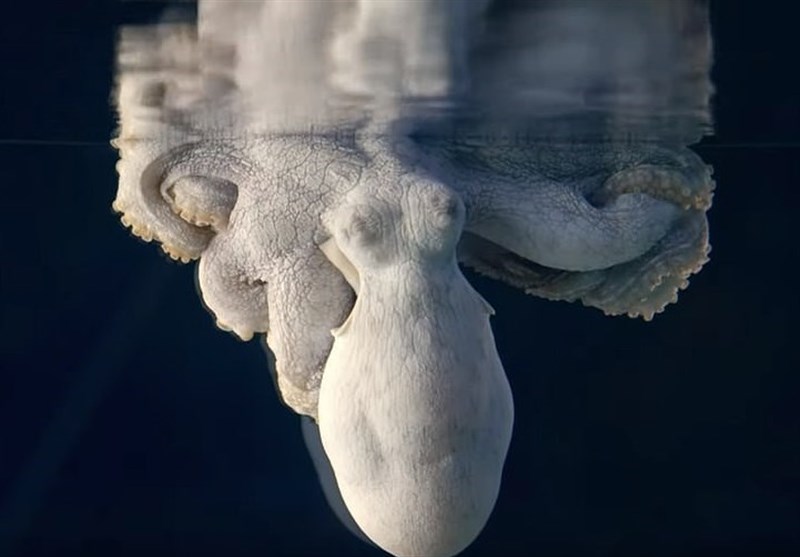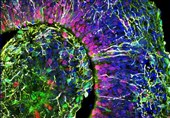Video May Prove Octopuses Dream
TEHRAN (Tasnim) – In a never before seen footage, an Octopus named Heidi changes skin-color, from light to dark, while sleeping upside-down in a tank making scientists believe that they can dream.
Octopuses have amazed scientists for centuries --these underwater creatures can open jars, recognize faces and now a stunning video has suggested that they have dreams.
The researcher said this marine animal could be dreaming, as the different colors are the same camouflage she uses when hunting and eating prey while awake.
The clip is part of a PBS sequence, 'Octopus: Making Contact', which is set to premier to the public on October 2.
Marine biologist David Scheel from Alaska Pacific University welcomes viewers into his home, as he observes an octopus named 'Heidi'.
During this documentary, Scheel shares 'remarkable discoveries' about the animal's extraordinary intelligence, personality and skills, according to the producers.
The segment of the sleeping creature shows Heidi sleeping upside-down in a tank and in moments, her skin begins to change color --leaving Scheel to suggest that marine animal is dreaming.
However, he has not conducted enough research to prove this theory, but he does speculate about what Heidi might be dreaming about.
'If she is dreaming, this is a dramatic moment,' Scheel said, The Daily Mail reported.
'You could almost narrate the body changes and narrate the dream. She sees a crab and her color starts to change a little bit, then she turns all dark, octopuses will do that when they leave the bottom.'
'This is a camouflage, like she's just subdued a crab and she's just going to sit there and eat it, and she doesn't want anyone to notice her.'
'It's a very unusual behavior to see the color come and go on her mantle like that, just to be able to see all the different color patterns flashing one after the other, you don't normally see that when an animal's sleeping.'
'This really is fascinating.'
An octopus' mantle is a very special part of its body.
Located behind its head and opposite of its arm, this large bulbous structure is home to all of its organs.
Octopuses have thousands of color-changing cells called chromatophores that lie just under the surface of the skin.
These specialized pigment cells expand and contract and push the pigment to the surface.
The creature's skin color temporarily changes thanks to this mechanism.
This process is triggered in the wild by a changing environment or by an emerging threat.
On top of chromatophores, two other types of cells - iridophores and leucophores - are involved in the camouflaging process.
Iridophores have layers of reflecting plates that create iridescent greens, blues, silvers and golds, while leucophores are cells which can detect what colors best match the animal's surrounding.
This allows octopuses to appear inconspicuous whatever their environment and change their skin tone to match their surroundings.
Given that octopuses have very precise control over the system by which their skin color changes, it is rare for them to trigger the response while sleeping.
Unlike humans, octopuses have multiple brains rather than just one central nervous system.
Instead of being in one place, their brain cells are spread all over the body, which gives the creature very precise control to each part of the body.
Changing the coloration over its skill is an active process that requires the octopus to activate specific bundles of neurons, and depends on a complex array of nerves and muscles controlling the expansion and contraction of the pigment sacs.







